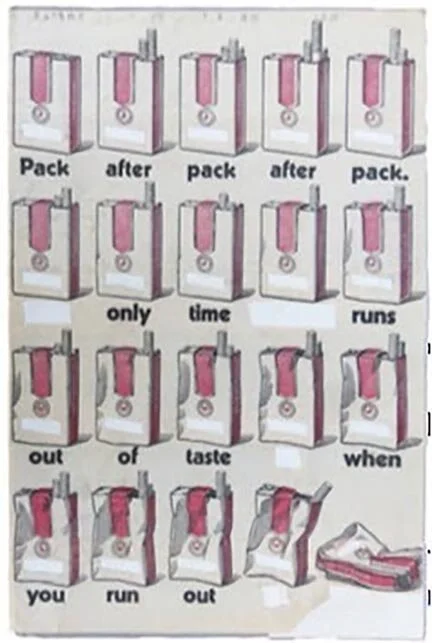Frieze NY 2016: Felipe Ehrenberg at Baro Galeria
The Mexican-born multi-media artist Felipe Ehrenberg may have found himself drawn to transgressing and then interweaving established fields and modes of art-making from the very beginning of his practice. Initially trained as a printmaker and already involved in political activism, Ehrenberg soon after apprenticed as a painter, sculptor, engraver, and more, before he embarked on a journey of experimentation. He added film and performance art into his creative repertoire and participated in art movements locally and then internationally. While contributing writing and art to literary media, he became more involved in lecturing, curating, and criticism, while continuing to engage in activism. Indeed, the sheer variety of his output is either evidence of his innate proclivity for working outside familiar conceptual confines, or it has influenced the development of the nature of his practice.
Although Ehrenberg’s print-oriented work dominates the Sao Paulo-based Baro Galeria booth at Frieze New York 2016, making up a kind of mini-retrospective of his output mainly from 1968 –1976, alongside a large sculptural installation from 1990, the artist’s versatility in thought and practice is readily apparent to the viewer. The works themselves may be described as print-oriented, because they correspond to such a description only in the broadest sense of the term, incorporating as they do drawing, photography, newspaper clippings, handwriting, and much more. This is to say nothing of the subject matter that touches upon literary criticism, politics, sexuality, leisure, and other aspects of everyday life. As if the small booth space wasn’t already relatively packed with work, the combined visual plethora of materials, media, and themes evoked furthermore add furnish.
Felipe Ehrenberg
FRONTERAS//BORDERS//граница//GRENZEN//σύνορο//FRONTEIRAS//FRONTIÈRES 1990
Cotton fabric with fragments of Ana Castillo poem, notes in charcoal and sanguine, acrylic lines, cotton yarn, wood, TRIPLAY and wire. Wood treated against insects with Vidamadera LPU liquid (pentachlorophenol sodium) and covered with acrylic varnish.
67 3/10 × 23 3/5 × 62 3/5 in.
171 × 60 × 159 cm.
Perhaps the central work around which the exhibition revolves is a multimedia sculptural installation fittingly titled BORDERS in different languages. It consists of a minimalistic wooden frame across the middle of which a fabric is laid out, marked with poetry, acrylics, and charcoal. Meanwhile, dozens of cut-out silhouettes of people are hung by wire above it. True to Ehrenberg’s recognizable aesthetic, the various media that the installation employs are of a manual nature– acrylic, fabric, wood, wire, etc. – lending the work a ‘handmade’ look. Overall it is relatively difficult to describe and categorize.
Felipe Ehrenberg
Cow?
1971
Collage on printed paperboard
11 7/10 x 8 3/10 in.
29.8 x 21 cm.
Surrounding ‘BORDERS’ are the bulk of Ehrenberg’s works, his ‘prints.’ Among them are Cow? (1971), Pack after pack only time runs out (1971), and Muro de lamentos (1969).
Cow? may be one of the most noticeable compositions in the exhibition, due to the turquoise color of its paperboard and the subject matter and composition of the work itself. The piece collages the imagery of masculinity and the corporate world onto a canvas that displays the image of a young woman in a bikini, disrupting its sexualized message to the viewer.
Felipe Ehrenberg
Pack after pack only time runs out
1971
Newsprint on cardboard
13 x 8 2/5 in.
32.9 x 21.3 cm.
Another work, produced the same year as Cow?, calls attention through its imagery of the cigarette pack, reminiscent of Pop Art-style subject matter or Stuart Davis’s 1921 painting, Lucky Strike. Rows of identical images of cigarette packs fill a cardboard canvas, only the last two packs on the bottom right exhibit any condition of use, meanwhile a text runs between the rows from top to bottom reading: “Pack after pack. only time runs out of taste when you run out.”
Felipe Ehrenberg
Muro de lamentos
1969
Intervened postcard glossy
8 ½ x 7 3/10 in.
21.5 x 18.5 cm.
Muro de lamentos (1969), a manipulates postcard, consists of a photographic image of the Western Wall of Jerusalem, attended to by a pious crowd. The overall somber colors of the photograph contrast with a pasted view fitted into the wall’s brick composition, revealing a colorful painting of a beach at summertime.
Although most of the exhibition consists of print-based works belonging to a particular period of Ehrenberg’s career, mainly the years revolving around his last years in Mexico before going into exile in England for his political activities, the many interests and impressive versatility of the artist’s practice are shown to have already been abundantly clear, foreshadowing a consistently dynamic career that continues to this day.
Arthur Ivan Bravo is based in Brooklyn, and is a writer of music journalism and art criticism, manager of an art space called Good Work Gallery, and also works as a craftsman.




